Unknown Assailants Attack Mother Of A Political Prisoner Who Died In Jail
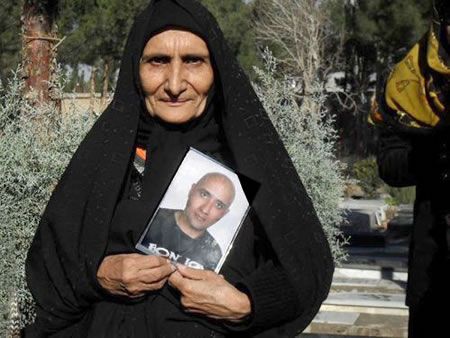
The elderly mother of a blogger who died in custody in 2012 was assaulted by unknown individuals in Iran on Thursday when she was on her way to visit her son’s grave.

The elderly mother of a blogger who died in custody in 2012 was assaulted by unknown individuals in Iran on Thursday when she was on her way to visit her son’s grave.
Gohar Eshghi, mother of Sattar Beheshti has been demanding justice for her son who was arrested by security forces on October 30, 2012, for his blogging activity and died a few days later, in what was believed to be a case of torture in detention.
Just before noon on Thursday Eshghi was on her way to the cemetery when two people approached on a motorcycle and one of them attacked the elderly woman knocking her to the ground. People who saw the incident took her to a hospital, with injuries, a statement released by Sattar Foundation on Instagram announced.
The statement says that one month ago security agents had detained the family to prevent them from joining other victim families from a gathering. During that arrest agents threatened the family that some people die in prison under torture, but some could also die from an accident or in an altercation. After the incident the family kept receiving anonymous threats.

Tehran says it is preparing a list of American officials and entities to sanction, after the US Tuesday designated more Iranian officials for rights violations.
Kazem Gharibabadi, who until recently was Tehran’s envoy in international organizations in Vienna, including the UN nuclear watchdog IAEA, condemned the US announcement of new sanctions and said the United States itself has serious human rights issues.
Gharibaabdi is now the head of the human rights office in Iran’s Judiciary, which has been repeatedly criticized by international human rights organizations for playing a major role in arrests of dissidents, journalists and conducting unfair trials, which in some cases end in issuing the death penalty.
Gharibabadi said, “America’s regime stands accused of the way it handles peaceful protests and should answer to the world public opinion for its violent confrontations with protesters.” He also accused the US of suppressing racial minorities and said, “George Floyd is just one example of countless human beings killed by the police.”
The US and the European Union have sanctioned many Iranian security officials for their role in Iran’s November 2019 protests when security forces opened fire on demonstrates in many cities and town killing hundreds.
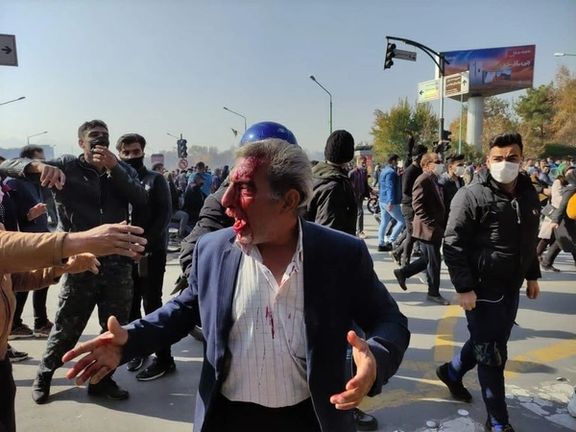
Spokesman of Iran's judiciary Tuesday for the first time accused some of the detained protests in Esfahan of using firearms, without presenting any evidence.
Speaking to reporters at his weekly press conference, Zabihollah Khodaeian said around 130 were arrested during the protests and indicted, some were immediately freed, and another group were freed Monday. "Except those who had fired weapons whose crime is disturbing security, others have been freed on bail or are in the process of being freed," he added.
Rights organizations say at least 214 including 13 children were arrested during recent protests.
Security forces cracked down on farmers' two-week-long protests against water shortage in Esfahan, centered in the dried-up Zayandeh Roud riverbed, with tear gas on 25 November in the middle of the night, set fire to their makeshift camp and bulldozed the remains. A few days later, the state television aired "confessions" of a young woman and man taking the blame for torching the farmers' tents "to provoke a riot".
On 26 November security forces pushed thousands of citizens of Esfahan -- who were trying to join the farmers in the dry river bed -- out into the adjacent boulevards and streets where they attacked them with batons, teargas, and shotgun pellets.
Videos and photos posted on social media from the November 26 protests, during which protesters chanted anti-government slogans, showed violence from the security forces in the river bed and on the streets, a few instances of protesters throwing stones at security forces, and one instance of protesters setting fire to a police motorbike but no use of firearms by the protesters. The authorities have also not offered any evidence of protester use of firearms so far.
In the same videos, anti-riot police and other security forces are shown brutally beating protesters with batons and chasing them even inside their houses, and instances of a security officers directly shooting at protesters.
There are also quite a few videos and photos that show protesters including elderly men and women, apparently farmers, with shotgun pellet wounds on their faces and bodies both on the street and in hospital receiving treatment for their wounds.
Rights groups and medical authorities have confirmed several cases of loss of eyes resulting from shotgun pellet injuries. A medical official told Iranian state television on November 27 that 40 people had been treated for eye injuries sustained during the previous day's protests, with 19 hospitalized.
"It was the police who did this, don't go and claim later that they were thugs and hooligans," a wounded old man in one of the videos says. Authorities often refer to anti-government protesters as "thugs and hooligans".
Iranian authorities often blame foreign powers after they violently suppress protests and cast the blame for injuries and destruction of public properties on 'agents of the enemy', 'thugs and hooligans', and 'seditionists'.
On December 3, security forces imposed an undeclared martial law in the areas close Zayandeh Roud where protesters were planning to gather again to hold communal prayers.

The United States has issued sanctions against a host of Iranian security agencies, prisons and senior security officials for various violations of human rights.
The sanctions announced on Tuesday [December 7] come amid diplomatic efforts to revive the 2015 nuclear agreement and Tehran’s insistence that all US sanctions issued since 2018 must be lifted before a deal is reached.
A detailed statement by the Department of Treasury listed those sanctioned, providing their role in violent suppression of protests and other violations of human rights.
Secretary of State Antony Blinken also tweeted that “Ahead of the Summit for Democracy, the U.S. is demonstrating its commitment to supporting victims of repressive activities and human rights abuse worldwide,” by designating actors in Iran, Syria and Uganda.
The Special Units of Iran’s Law Enforcement Forces (LEF Special Units) dedicated to crowd control were singled out for their violent crackdown on protesters in the aftermath of Iran’s disputed 2009 presidential elections as well as their role in firing on unarmed protesters in the November 2019 demonstrations in Iran. Also, Iran’s Counter-Terror Special Forces (NOPO) are designated for assisting LEF Special Units in violence against protesters in November 2019.
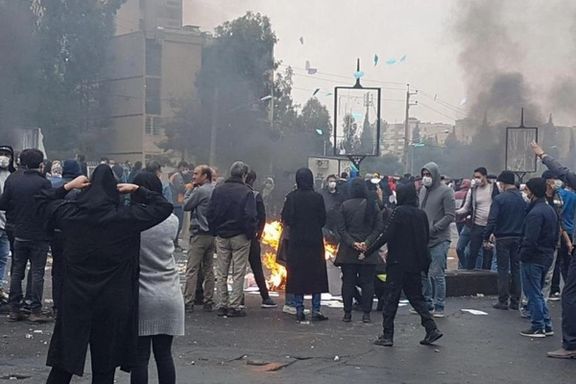
Up to 1,500 or more people were killed in November 2019 when security forces received orders to fire on people protesting a sudden increase in gasoline prices.
The statement said that these units “used excessive and lethal force, firing upon unarmed protestors, including women and children, with automatic weapons. NOPO forces blocked main streets with armed vehicles and fired randomly at crowds with heavy machine guns.”
From among security officials Hassan Karami, the commander of LEF Special Units, Seyed Reza Mousavi Azami, a unit commander and Mohesen Ebrahimi the commander of NOPO were designated for carrying out attacks on protesters.
Gholamreza Soleimani, commander of IRGC’s Basij that “reportedly were among the Iranian security organizations that collectively killed hundreds of Iranian men, women, and children.”
The governor of Qods City, Leila Vaseghi was also sanctioned “for issuing an order to the police and other armed forces during the November 2019 protests to shoot unarmed protestors, causing dozens of deaths or injuries.”
Also, IRGC interrogators Ali Hemmatian and Massoud Safdari are designated for their “long records of physical abuse against Iranian political prisoners at IRGC detention facilities, including at Iran’s Evin Prison.”
Zahedan Prison, in southeaster Iran is designated for execution of a political prisoner as retaliation against him for speaking out for his rights, and violation of other political prisoners’ rights.
Similarly, Isfahan Central Prison known as Dastgerd Prison was also designated for executing political prisoners.
Soghra Khodadadi, the current director of Qarchak Women’s Prison was designated for ordering a violent attack against prisoners who tried to exercise their right to freedom of speech.
Moahmmad Karami, an IRGC Brigadier General was sanctioned for his unit firing at unarmed fuel porters at the border with Pakistan killing around ten people.

An Islamist student on Tuesday harshly attacked President Ebrahim Raisi and the ruling elite during a public meeting in Tehran’s Sharif University of Technology.
Raisi who visited the university to mark the annual student day, was peppered with attacks by the Secretary of the university’s Islamic Student Union. The group is present on all campuses and is a state-sanctioned organization whose members belong to the Basij paramilitary wing of the Revolutionary Guards.
The remarks of the student leader, Mohammad Hossein Bayat are stunning in their directness and degree of criticism. He told Raisi that “You got elected in the least competitive election in the history of the Islamic Republic, with the lowest rate of voter participation.” He added, “We are speaking to you not as a president elected with the free vote of the people in a free election. We are speaking to you as a representative of the ruling system.”
Raisi’s key rivals were barred from running in the June election by a watchdog council controlled by Supreme Leader Ali Khamenei, that ensured his victory among less popular candidates.
Bayat, addressing Raisi said that he represents a ruling system which “in the past 40 years has not opened a path for the progress of the people, despite the revolutionary ideals of freedom and justice.” But what the student leader said next was even more stunning. He told Raisi that the Islamic Republic not only has failed to serve the people, but it has “drowned itself in various crises and super crises and except some brief periods, it has not seen stability and calm.”
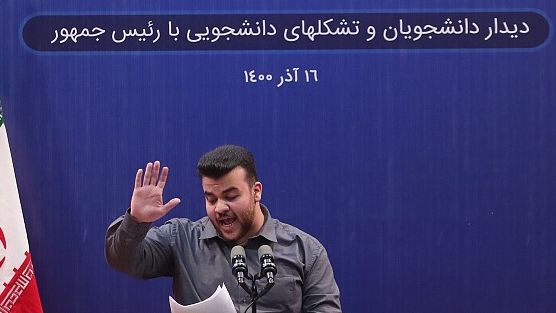
These remarks implicitly pointed to the Islamic Republic’s confrontational foreign policy among other issues, such as an inefficient economic system, persecution of dissidents, lack of transparency and disastrous environmental policies.
Bayat then reminded the president that he is the product of the least competitive election, organized by an “incapable and ineffective political system” which has pushed the people into “hopelessness about any change or improvement” in Iran.
He went on to accuse Raisi of stacking his administration with corrupt cliques, and he openly named the president’s top aides. Bayat also said that the current administration is the most militarized government in the history of the Islamic Republic, dividing critical posts among the Revolutionary Guard brass.
Iranian presidents have often met tough critics whenever they visited universities. But dissident students have been intimidated into silence and the Islamic Student Associations are controlled by elements who are supposed to be loyal to the Islamic Republic. Bayat’s harsh remarks should be seen in this context.
Bayat told Raisi to tell his friends that there is no glory in zero percent economic growth, political isolation, lack of transparency and all other policies that impose an “exorbitant cost on the Iranian nation.”
He continued to mention more than a dozen crises in the country, above all corruption of the “political-military elite” and the suppression of the people who are hopeless and fed up with their economic plight. In a situation where all civil society has been demolished and activists are in prison, Bayat asked Raisi, what other alternative exists except violence and protest. He added that the ruling elite has basically decided it does not want to listen to the people as long as it can fire guns to protect itself.
In the end of his remarks Bayat warned Raisi that if a rational way out of the current crises-ridden situation is not found, the ruling elite will receive “an answer from the people that might not come immediately…but will definitely be revolutionary and decisive.”
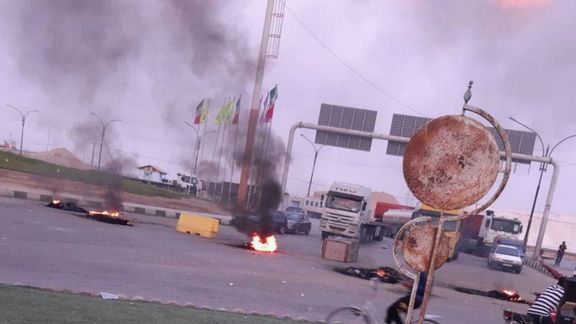
A protester accused of shooting a Special Riot Force commander in Mahshahr, southern Iran in the nation-wide November 2019 protests has been sentenced to death.
The foreign-based Iranian Human Rights Activists News Agency (HRANA) reported Friday that authorities informed the family of Abbas Shelishat (Driss), 45, that he has been sentenced to death on a number of charges including taking up arms against the Islamic Republic and shooting a commander of the Special Anti-Riot Forces, Reza Sayyadi, during protests in Mahshahr in November 2019.
A source close to the family told HRANA that the judicial authorities gave a verbal notice of the sentence to the family four months ago and have since refused to provide any official confirmation of the sentence to them or Shelishat's two lawyers who have also not even been allowed to read the case files.
The Judiciary has also sentenced several others to death for the protests in November 2019 including three young men whose death sentences have been confirmed by the Supreme Court but not carried out yet.
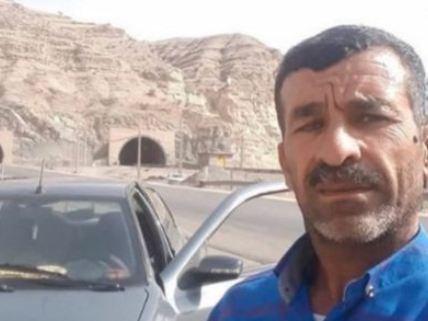
Shelishat's brother, Mohsen, who has also been accused of complicity in the killing of the anti-riot officer, has been sentenced to life in prison, the family have said.
Karim Dahimi, Iranian Arab activist, told Iran International Saturday that this case has been sent to the Supreme Court for approval. According to Dahimi, a second expert has testified to the court that Shelishat could not be responsible for the killing of the officer as Shileshat's position at the time of the killing made it impossible for him to shoot the officer in the back.
Sources close to the family have told HRANA that Shelishat's wife died of a brain stroke after finding out about the sentence. In the past four months the family apparently kept the news of the death sentence secret waiting to get official confirmation.
A few weeks after the protests, the state-run television aired a video of Shileshat and other prisoners whose faces were obscured and presented as "confessions of armed terrorists". The state media described the Mahshahr protesters as terrorists and Arab separatist groups.
In the video, a man allegedly Shileshat, said with his brother's complicity he had shot an officer in a green uniform during the protests from the roof of his house.
In the same program, two other prisoners spoke about the events at the time of the killing with one of them claiming that two protesters who arrived on motorcycles shot at police officers while the officers were praying together.
The events described in the program happened during a bloody crackdown by the Revolutionary Guards and other security forces against largely unarmed protesters in the southern city of Mahshahr and its suburbs after protesters gained control of the city's transit roads.
The port city of Mahshahr is in the oil-producing Khuzestan province and close to large petrochemical plants and other oil facilities.
The crackdown on protesters seeking refuge in the marshlands on the outskirts of the city security forces reportedly opened fire indiscriminately. The lethal attack has come to be widely referred to as the Mahshahr Massacre among Iranians.
President Rouhani’s chief of staff, Mahmoud Vaezi, on December 11, 2019 confirmed the reports about the killing of protesters in Mahsharhr but claimed that a group of armed individuals were responsible for the violence and shooting at both the protesters and the security forces.
Two weeks after the incident in Mahshahr, the New York Times reported that between 40 to 100 protesters were killed during the crackdown based on multiple interviews with eyewitnesses including a nurse at a hospital where the wounded were treated.